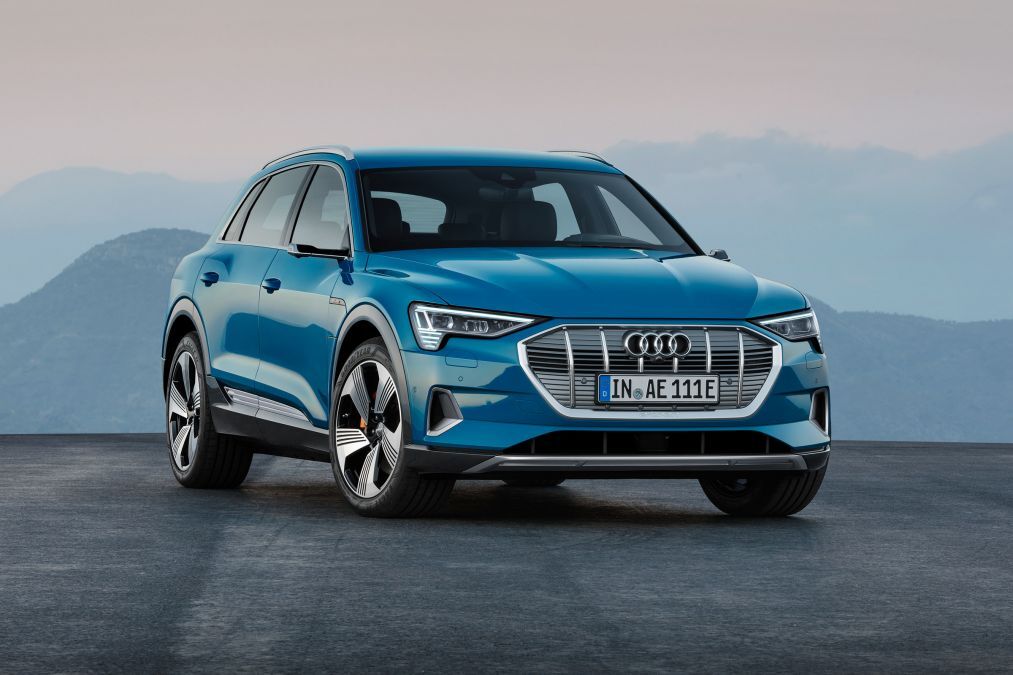Audi pulls the wraps off the e-tron
The e-tron will be Audi’s first mass produced electric SUV to challenge the likes of Mercedes-Benz EQC and the Jaguar I-Pace; the electric SUV accelerates from naught to 100kmph in 5.7 seconds with a top whack of 200kmph
 The e-tron will be Audi’s first mass produced electric SUV to challenge the likes of Mercedes-Benz EQC and the Jaguar I-Pace; the electric SUV accelerates from naught to 100kmph in 5.7 seconds with a top whack of 200kmph
The e-tron will be Audi’s first mass produced electric SUV to challenge the likes of Mercedes-Benz EQC and the Jaguar I-Pace; the electric SUV accelerates from naught to 100kmph in 5.7 seconds with a top whack of 200kmphThe first Audi EV to enter series production
Audi has revealed the e-tron at the Audi Summit in San Francisco and it is the first electric SUV to be mass produced by the company. The e-tron isn’t designed radically to make it stand out as Audi’s first mass produced EV. The change is rather gradual and there are a number of things you notice visually to differentiate it from its IC engine cousins. The grey octagonal grille, the lack of exhaust pipes, the orange brake calipers and the e-tron moniker flanking the sides of the SUV are the tell-tale differences. The rear has a ribbed aluminium panel and an LED tail light strip that extends to the full width of the SUV.
You will also notice that instead of the regular door mounted mirrors, there are cameras like on the concept car that was displayed earlier. It is claimed that they give a wider field of vision to reduce blind spots. The footage is displayed on an OLED screen on the upper front side of the front doors. Audi claims that the optional small wing mounted cameras extend the range of the car to 2.3km due to their aerodynamic shape. The e-tron weighs less than 2,500kg.
The Audi e-tron will hit 100kmph from standstill in less than 6 seconds
Powering the e-tron are two electric motors (one mounted on each axle) and they produce a combined power output of 402bhp and 664Nm of torque to drive all four wheels via its new quattro AWD system. The SUV is mostly rear wheel driven and it switches to AWD only when the electronic brain of the SUV detects a loss of traction. The top speed of the SUV is electronically limited to 200kmph and Audi claims that the SUV will accelerate to 100kmph in 5.7 seconds. The e-tron with its integrated electro-hydraulic brake control system recovers energy during braking. By selecting the adaptive cruise assist, the system can also brake and accelerate the electric SUV predictively. The batteries are located under the passenger compartment (36 modules made up of 12 lithium-ion cells each, weighing 700kg) which help to keep the centre of gravity of the car low.
The interiors are also elegantly designed and it comes with the MMI navigation plus including LTE Advanced and a Wi-Fi hotspot as standard. The e-route planner displays the appropriate route with the required charging points, with automated billing at the charging stations in its home market in Germany.
The range of the e-tron, at 400km (WLTP cycle), is low when compared to the the Jaguar I-Pace, which has a range of 470km under the WLTP cycle. There will be at least 200 charging stations across Europe by the end of 2018 and they will be doubled by 2020. The e-tron will take 30 minutes to charge 80 per cent at a 150kW lonity station (a network of high-powered DC charging stations).
The Audi e-tron is competitively priced at Euro 79,900 in Germany. Deliveries for European customers will start later this year.


